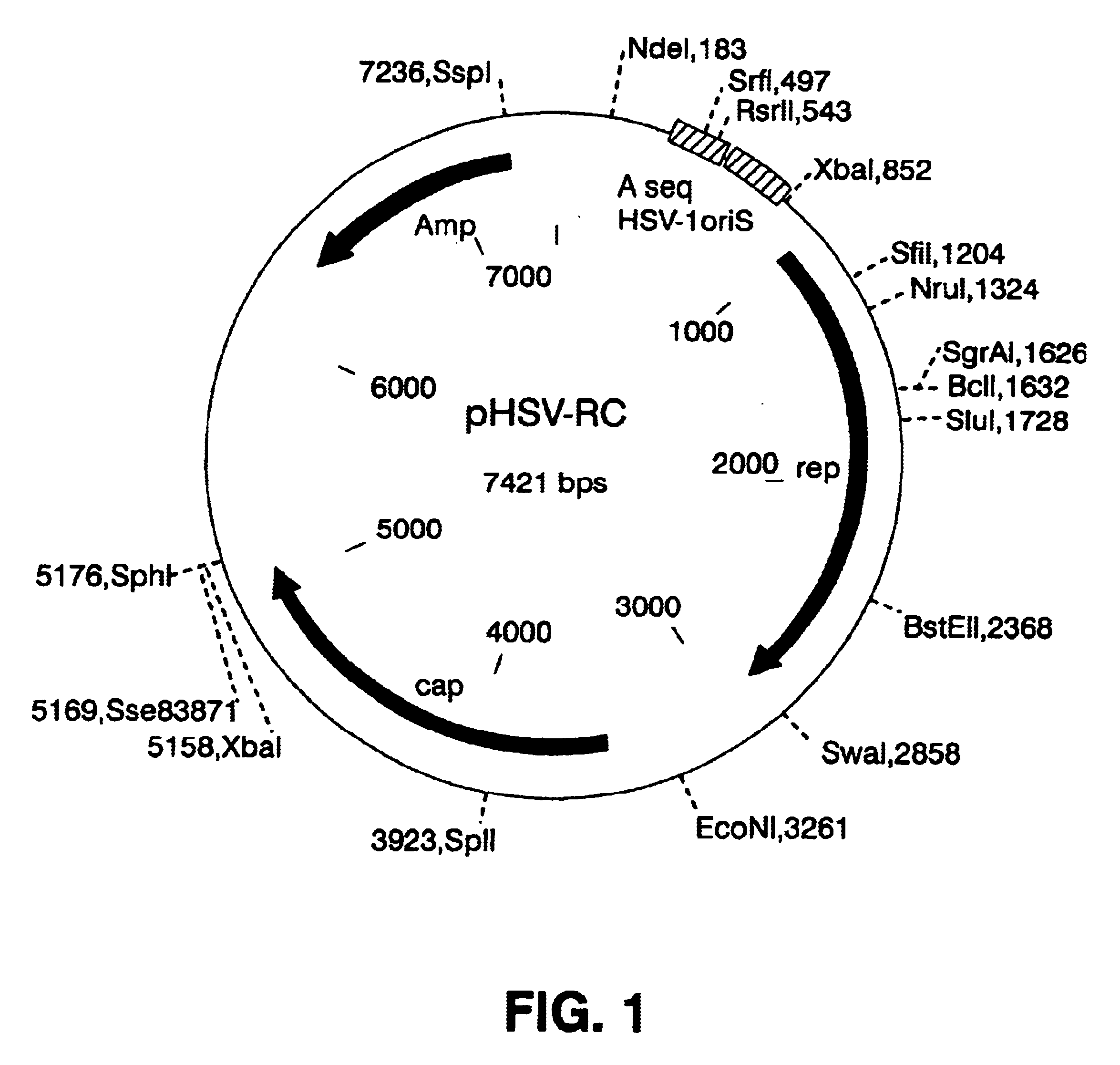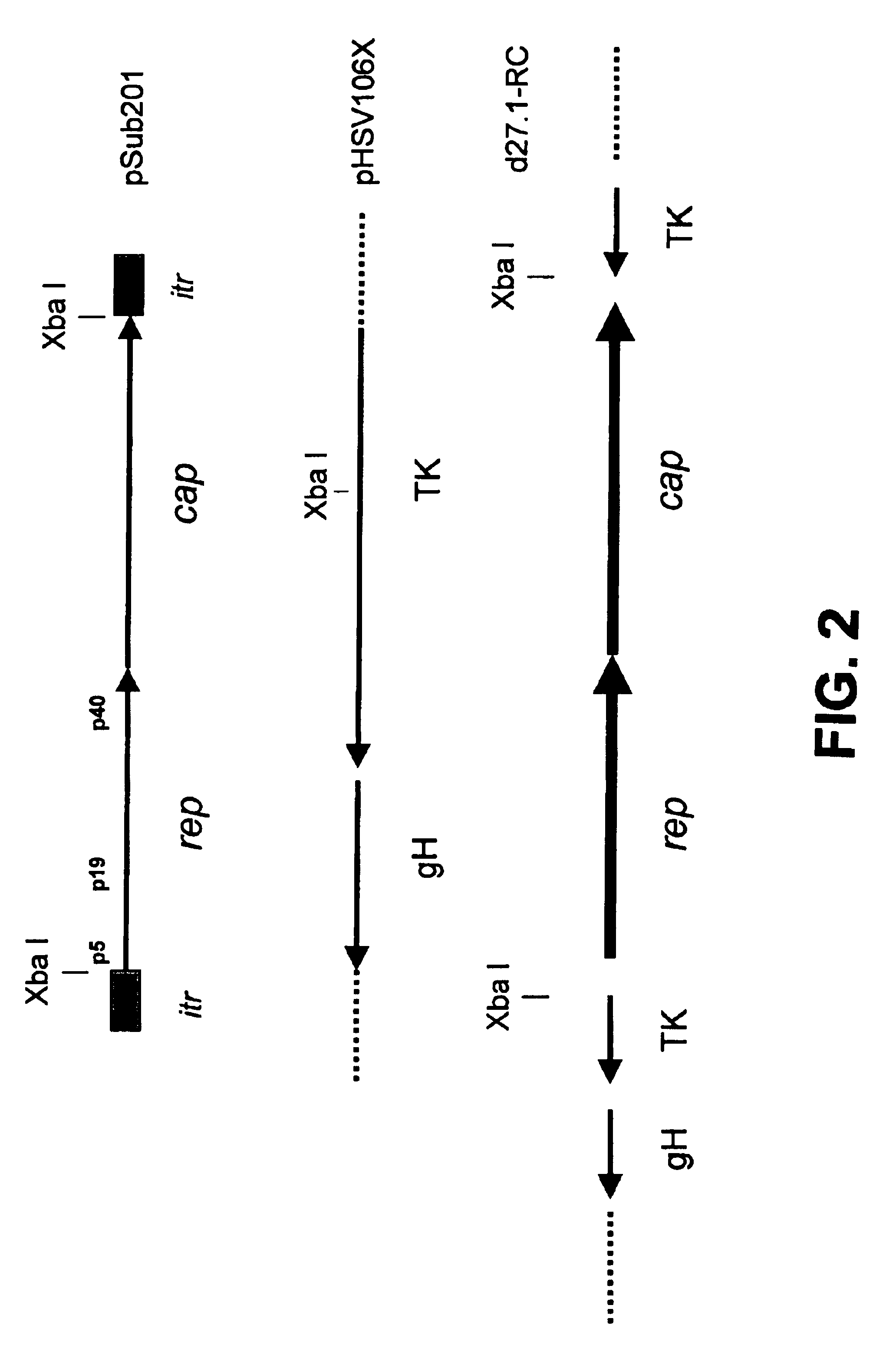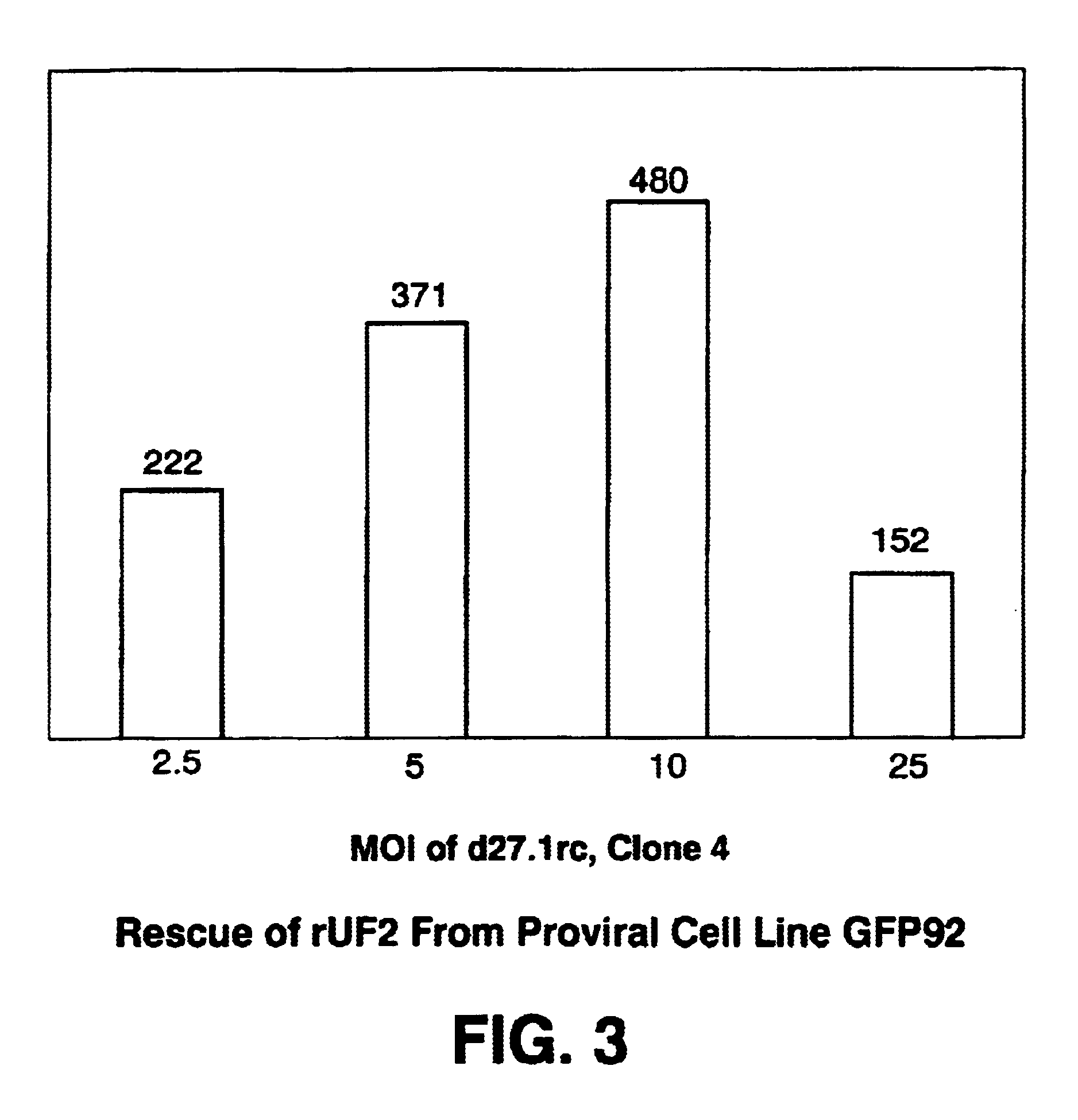Methods for large-scale production of recombinant AAV vectors
a technology of aav and vector, applied in the field of molecular biology, can solve the problems of insufficient raav production yield, difficulty in producing large quantities of high-titer vector stocks, etc., and achieve the effect of reliable, cost-effective and large-scale production
- Summary
- Abstract
- Description
- Claims
- Application Information
AI Technical Summary
Benefits of technology
Problems solved by technology
Method used
Image
Examples
example 1
5.1 Example 1
Materials and Methods
Abbreviations used include: AAV, Adeno-associated virus; Ad, Adenovirus; HSV-1, Herpes simplex virus-1; MOI, multiplicity of infection; pfu, plaque-forming units; wt, wild type.
5.1.1 Cell Lines
HeLa cells were maintained in Dulbecco's modified Eagle's media (DMEM, Gibco-BRL, Grand Island, N.Y.) that contained 10% heat inactivated fetal calf serum (FCS). Vero cells were maintained in DMEM which contained 5% FCS. The V27 cell line, a neomycin resistant Vero cell line capable of expressing ICP27, was maintained in DMEM which contained 10% FCS and has already been described (Rice and Knipe, 1990). All 293 cell lines were maintained in DMEM which contained 10% FCS. Cells were cultured at 37.degree. C. in 5% CO.sub.2.
The UF2-293 cell line was generated by transfection of a 10 cm dish of 293 cells (from ATCC) with 10 .mu.g of pUF2 DNA (Zolotukhin et al., 1996). The cells were then passaged in 600 .mu.g / ml G418 (Gibco-BRL) for three weeks. Surviving cells we...
example 2
5.2 Example 2
Construction of HSV-1 Amplicon which Contains Rep, an HSV-1 Origin of Replication and HSV-1 Packaging
The expression of Rep 78 or 68 has been shown to inhibit the replication of DNA viruses. Rep interacts with Ad and cellular DNA replication in viral replication centers and disrupts their subsequent formation and function (Weitzman et al., 1996a, 1996b). Expression of the Rep protein also inhibits HSV-1 induced cellular DNA amplification and HSV-1 viral DNA replication itself (Heilbronn et al., 1990).
It was considered possible that the expression of Rep interfered with HSV-1 DNA replication to such an extent that creation of amplicon stocks of reasonable titer would not be possible. Similar problems were previously observed by multiple investigators attempting to create a recombinant Ad vector expressing Rep.
To determine if an amplicon system that expressed Rep could be created, a plasmid that expresses Rep from the p5 and p19 promoters was constructed, pHSV-RC (FIG. 1)....
example 3
5.3 Example 3
Rescue and Replication or rAAV Genome is Supported by HSV-1 Amplicon Expressing Rep from the P5 and P19 Promoters and Made with HSV-1 Helper Virus (HSV-RC / KOS)
The HSV-1 amplicon had to be able to rescue and replicate rAAV genomes efficiently if the HSV-1 amplicon system expressing Rep and Cap were to be successful at packaging rAAV genomes into virions. Rescue and replication of rAAV genomes by HSV-RC / KOS requires the appropriate expression of Rep from the p5 and p19 promoters, which are in a different genomic structural context than they are in the wt AAV genome. Additionally, expression of Rep from the amplicon genome has to be appropriately timed with HSV-1 early gene expression so that rAAV replication proceeds, as does wt AAV replication.
The ability of HSV-RC / KOS to replicate rAAV genomes introduced into cells by infection of rAAV virions, by transfection as plasmids, or when maintained as proviral rAAV genomes integrated into cellular chromosomal DNA was analyzed....
PUM
| Property | Measurement | Unit |
|---|---|---|
| diameter | aaaaa | aaaaa |
| diameter | aaaaa | aaaaa |
| diameter | aaaaa | aaaaa |
Abstract
Description
Claims
Application Information
 Login to View More
Login to View More - R&D
- Intellectual Property
- Life Sciences
- Materials
- Tech Scout
- Unparalleled Data Quality
- Higher Quality Content
- 60% Fewer Hallucinations
Browse by: Latest US Patents, China's latest patents, Technical Efficacy Thesaurus, Application Domain, Technology Topic, Popular Technical Reports.
© 2025 PatSnap. All rights reserved.Legal|Privacy policy|Modern Slavery Act Transparency Statement|Sitemap|About US| Contact US: help@patsnap.com



